Creed III marks the directorial debut of actor Michael B. Jordan, and the actor has talked openly about how the movie was inspired by anime.
Jordan has acknowledged lifting specific fight choreography from anime such as Naruto: Shippuden and Dragon Ball Z. Co-star Jonathan Majors has discussed how even the film’s character dynamics were influenced by “the friendships in those stories – and the rivalries.” It’s to Jordan’s credit that the boxing matches in Creed III look like nothing in the previous eight Rocky films, in much the same way that Ryan Coogler’s handheld approach made the early fights in Creed feel fresh.
There’s a decidedly heightened quality to the boxing matches in Creed III, even beyond the slow motion and intense close-ups that have defined cinematic depictions of the sport since Martin Scorsese’s Raging Bull. The IMAX camera focuses on eyes and fists in intense close-up, but it also captures the body as a physical object. Blows land with enough impact that ripples dance across muscles and sweat is thrown off the other side of the recipient’s body.
Movies like Raging Bull had turned the boxing ring into a dream space before, altering the physical dimensions of the arena and framing opponents in such a way as to place the audience inside the head of the fighters. However, Creed III goes even further, as if painting on the canvas. Old friends and rivals Donnie (Jordan) and Dame (Majors) are confronted with younger versions of themselves, and the geography shifts to include elements like the prison bars that held Dame for 18 years.
This is a smart directorial choice from Jordan on a number of levels. Just practically, Jordan shot Creed III during a global pandemic, which would make it highly expensive and risky to film the sort of traditional crowd scenes that close out these sorts of narratives. As such, the title bout at the climax of Creed III unfolds in a space that had to be largely created through special effects and movie trickery rather than by simply cramming a large crowd into an arena.
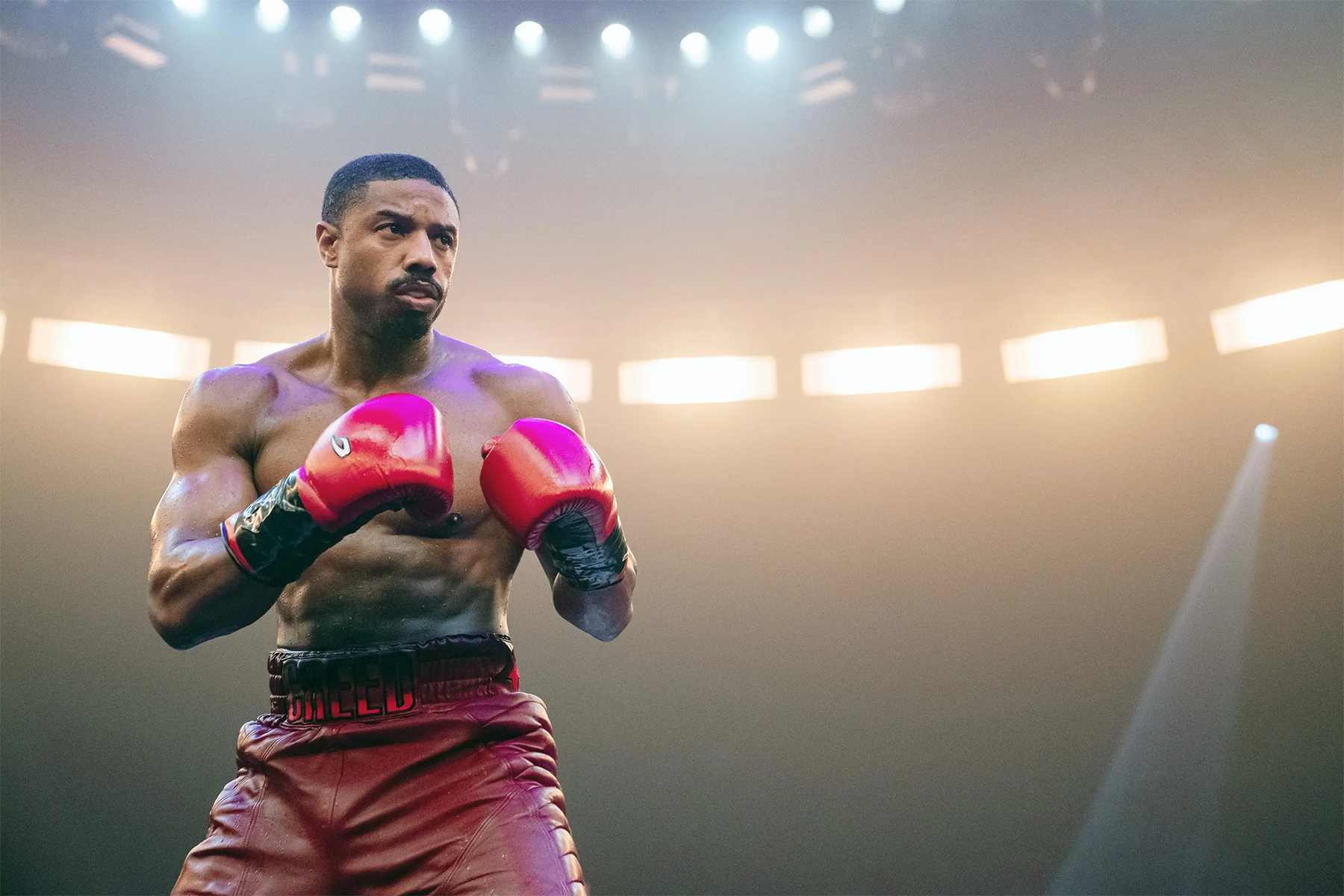
A lot of COVID-era blockbusters, especially franchise films like Doctor Strange in the Multiverse of Madness and Thor: Love and Thunder, have an uncanny quality to them. There’s a difficult-to-articulate emptiness that comes from the realization that characters are only sharing space through editing and compositing. There’s an unreality to it all. Jordan’s decision to take his cues from anime turns that production reality into a strong stylistic choice, transforming a weakness into a strength.
More than that, it serves to firmly anchor Creed III in its own moment. The Rocky movies have always been products of their time. The original Rocky spoke specifically to working-class anxieties in the mid-’70s and to a particular set of white masculine anxieties tied to the success of Muhammad Ali. To pick another example, with its blunt-force Cold War politics and celebration of uncritical consumerism, watching Rocky IV feels like snorting a hit of uncut 1985.
Creed III is a product of the 2020s, the work of a director who grew up with anime as an important part of their media diet. Jordan’s anime fandom has been part of his public persona from the start of his career. Before he was genuinely famous, he’d send tweets lamenting the end of his favorite manga or pointing fans to where they could watch Naruto: Shippuden. He launched a Naruto-inspired fashion line in October 2019 and cited Dragon Ball Z as an influence on his performance in Creed II.
In some ways, it is strange that Jordan’s embrace of anime has become such a major part of the narrative around Creed III. After all, Creed III is one of several major American movies over the past year that owes an obvious (and acknowledged) stylistic debt to anime, including the animated features The Bad Guys and Puss in Boots: The Last Wish. Creed III is notable for the fact that it is a live-action film aimed at adults rather than an animated family film, but it’s part of a larger trend.
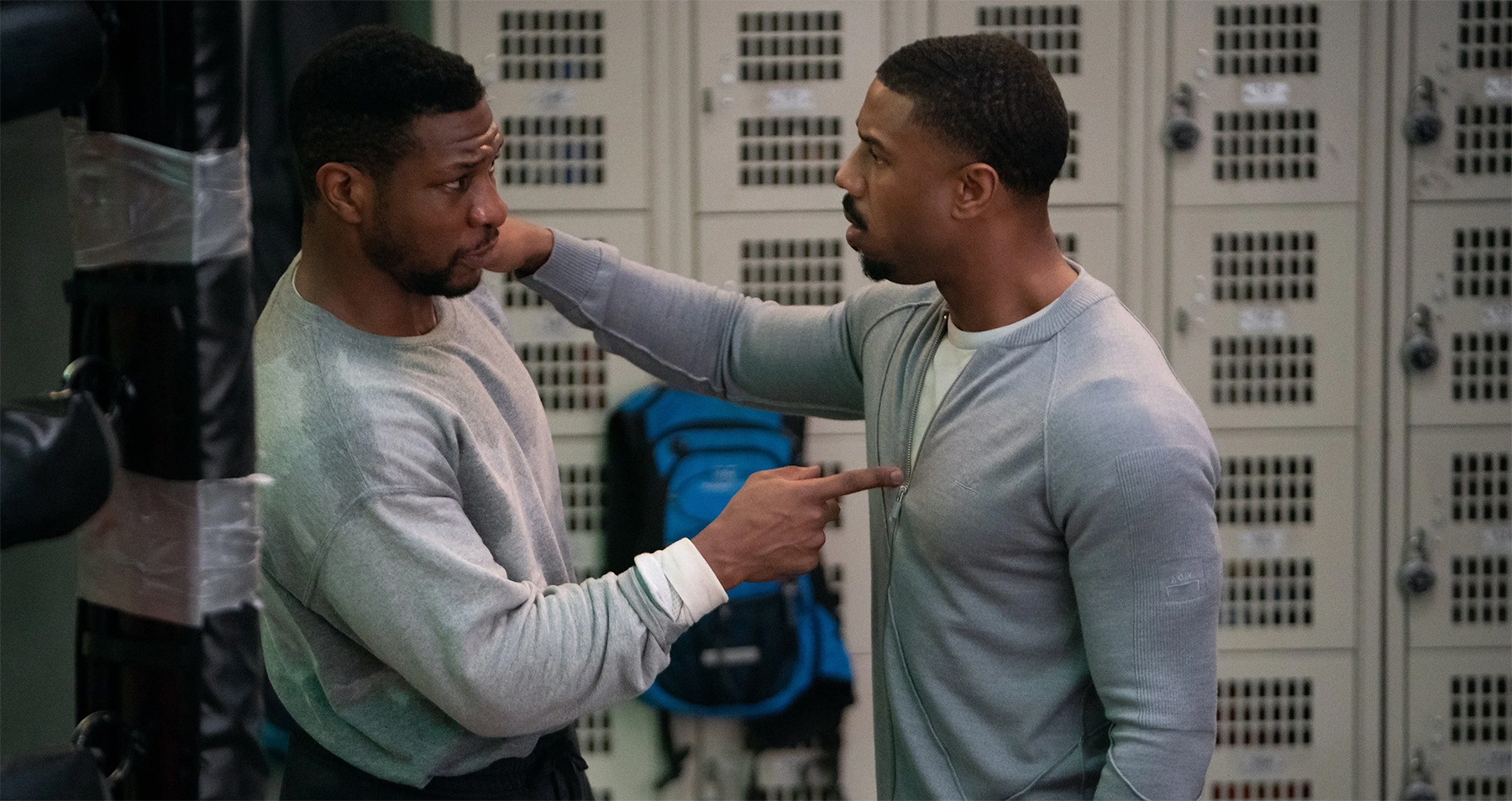
This trend is likely rooted in simple demographics. Obviously, anime has existed for decades, and there were always hardcore American fans aware of anime classics like Akira or Grave of the Fireflies. However, Japanese animation was not readily available in the United States during the 1980s. When Japanese animated films were imported into the American market, they were frequently heavily altered, with Nausicaä of the Valley of the Wind infamously reworked as Warriors of the Wind.
While there were early exceptions like Astro Boy and Speed Racer, anime really only broke into the American mainstream during the 1990s. Around the turn of the millennium, shows like Pokémon and Dragon Ball Z became breakout television hits for younger audiences. Studio Ghibli signed a lavish distribution deal with Disney in July 1996, which ultimately led to Neil Gaiman overseeing a high-profile dub for Princess Mononoke and Spirited Away winning the second ever Best Animated Film Oscar.
Hollywood noticed this success. There was a clearly young audience hungry for anime, and studios hoped to capitalize on it. During the 2000s, there was a gold rush in attempted live-action adaptations of beloved anime properties. The Wachowski Sisters fired the starting pistol on this would-be revolution. Their Matrix trilogy had been heavily inspired by anime and even featured a companion anthology, The Animatrix. They followed this with a feature film adaptation of Speed Racer.
Speed Racer arrived in cinemas in May 2008, one week after Iron Man and two months before The Dark Knight. Initial critical reaction was hostile, with Todd McCarthy complaining that the film was so visually overloaded that individual frames resembled “nothing so much as a kindergartener’s art collage.” The film underperformed at the box office, earning back just $94M on a $120M budget. Speed Racer’s failure and Iron Man’s success feels like a defining moment for modern Hollywood.
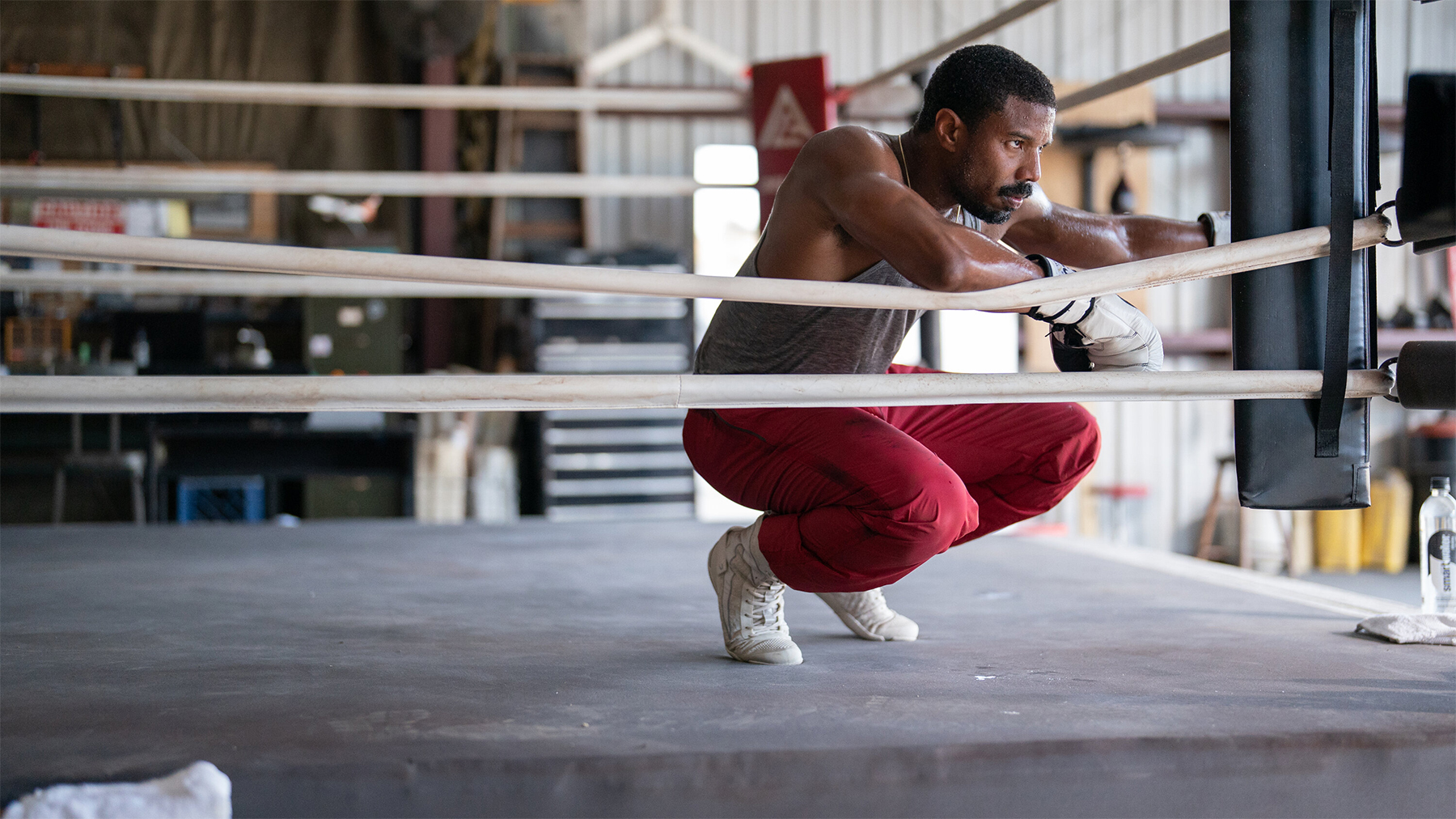
As with many Wachowski films, history has been kind to Speed Racer. The film was slowly reclaimed and rehabilitated in the years after its release, often as a movie that was ahead of its time. It has since been described as “a game-changing film which redefined and reconceptualized the film form,” “an unsung masterpiece,” and a “misunderstood art film.” There is now a very credible argument to be made that Speed Racer is handily the best direct American adaptation of a classic anime.
Watched in hindsight, with the knowledge of the anime adaptations that would follow, Speed Racer is obviously a labor of love from two filmmakers who adore the work that they are adapting. That is not the case with Dragonball Evolution, which released in April 2009, a movie so terrible that writer Ben Ramsey would later pen a groveling apology letter to fans for working on the project “chasing after a big payday, not as a fan of the franchise but as a businessman taking on an assignment.”
Avatar: The Last Airbender is not technically an anime, written by an American writing staff and animated in South Korea, but the theatrical adaptation belongs to the same trend. M. Night Shyamalan’s feature, titled The Last Airbender to avoid confusion with James Cameron’s Avatar, opened in July 2010. Shyamalan explained that, while he was initially “resistant” to the show, he was convinced by his daughter’s enthusiasm. The result was almost as hollow as Dragonball Evolution.
Hollywood never figured out how to adapt anime for western audiences. There were other failures, from films like the CGI-animated Astro Boy to the live-action Ghost in the Shell to more recent live-action streaming shows like Cowboy Bebop. These adaptations struggled to find audiences. Astro Boy earned $42M on a $65M budget, while Ghost in the Shell was “something of a box-office disaster.” Cowboy Bebop was canceled after its first season.
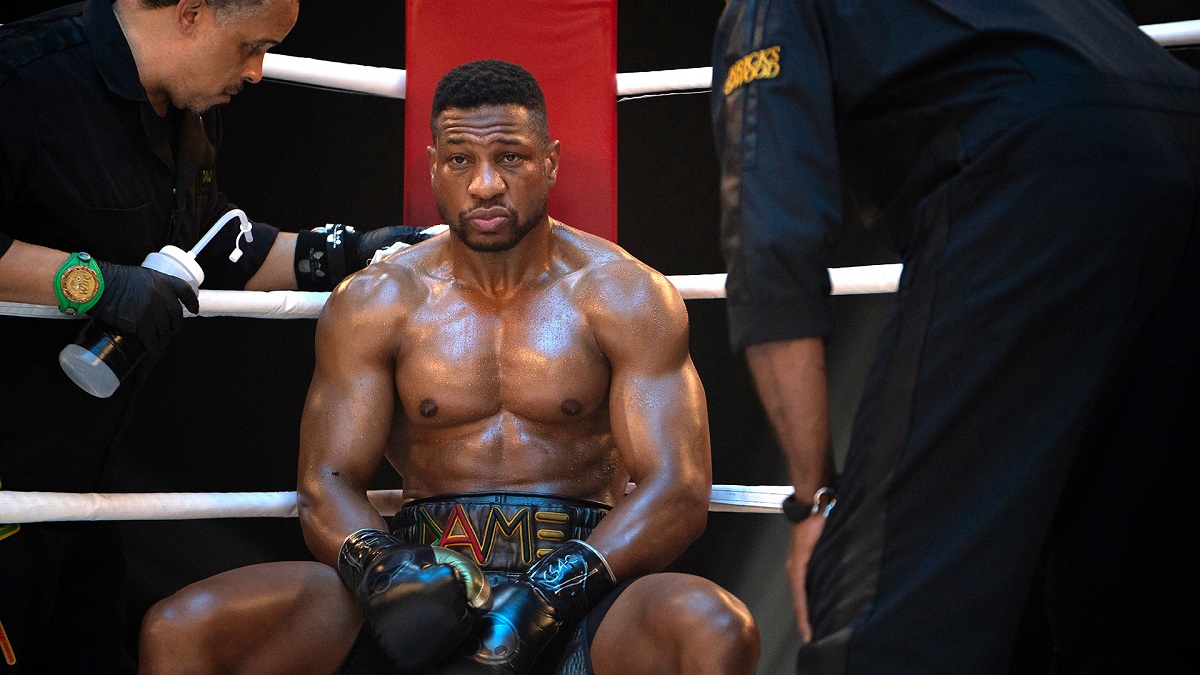
This may just be a cultural issue, a challenge in adapting stories from Japanese storytellers that worked for Japanese audiences. After all, the critical reception to recent Hollywood Godzilla adaptations from directors like Roland Emmerich and Gareth Edwards was notably less enthusiastic than the reaction to Hideaki Anno and Shinji Higuchi’s Shin Godzilla. However, it may also reflect the fact that Hollywood was chasing a trend more than organically embracing it.
Films like Creed III, The Bad Guys, and The Last Wish suggest that Hollywood’s best embrace of anime was always going to be a generational transition, that studios needed to wait for an emerging pool of talent who had been exposed to anime in their formative years. Movies like Dragonball Evolution and Ghost in the Shell can feel like disconcerting efforts to “Americanize” Japanese narratives, while films like Creed III tell American stories embracing the cinematic language of anime.
It makes sense that there were over two decades between anime breaking into mainstream American popular consciousness and its exerting such influence on the visual storytelling of these populist films. With the obvious exception of Speed Racer, many of Hollywood’s earlier attempts to capitalize on anime felt cynical, the work of studios and filmmakers who saw something successful but didn’t understand it. Decades later, the kids who actually watched anime are getting their shot.
After all, this is how filmmaking has always worked, with younger storytellers inspired by the art they consumed growing up. Japanese filmmaker Akira Kurosawa grew up watching John Ford movies and so folded his influence into Kurosawa’s fundamentally Japanese cinema. Then filmmakers like Steven Spielberg and George Lucas grew up watching Kurosawa’s films and filtered his style into their quintessentially American narratives. Jordan is doing something similar with his own influences.
Creed III is a vibrant and dynamic film, the work of a young director keen to showcase his interests and his vision. It’s also a welcome reminder that sometimes the best way to pay homage to an inspiration isn’t to simply try to remake it in another language and another medium, but to find a way to celebrate and hybridize it within one’s own artform.

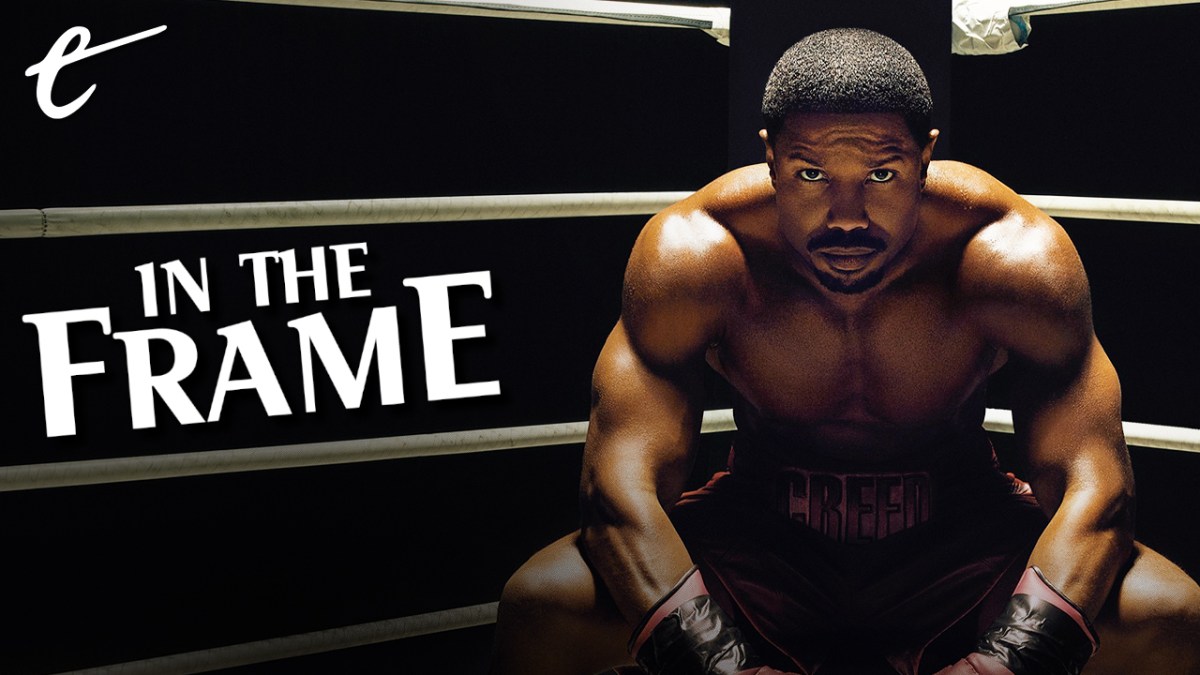




Published: Mar 6, 2023 11:00 am